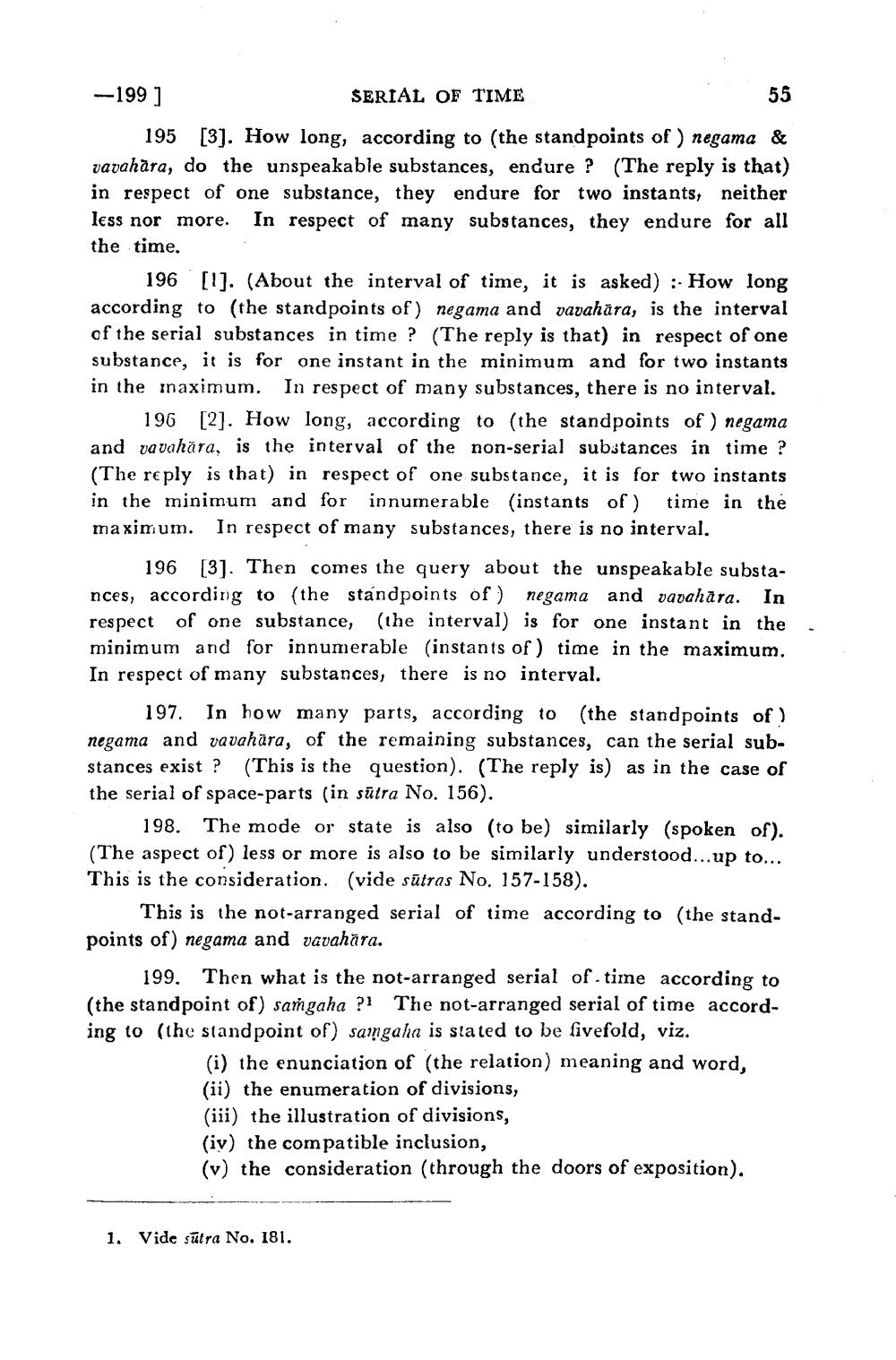________________
-199] SERIAL OF TIME
55 195 [3]. How long, according to the standpoints of ) negama & vavahāra, do the unspeakable substances, endure ? (The reply is that) in respect of one substance, they endure for two instants, neither less nor more. In respect of many substances, they endure for all the time.
196 [1]. (About the interval of time, it is asked) :- How long according to the standpoints of) negama and vavahāra, is the interval of the serial substances in time ? (The reply is that) in respect of one substance, it is for one instant in the minimum and for two instants in the naximum. In respect of many substances, there is no interval.
196 [2). How long, according to (the standpoints of ) negama and vavahāra, is the interval of the non-serial substances in time ? (The reply is that) in respect of one substance, it is for two instants in the minimum and for innumerable (instants of time in the maximum. In respect of many substances, there is no interval.
196 [3]. Then comes the query about the unspeakable substances, according to the standpoints of) negama and vavahāra. In respect of one substance, the interval) is for one instant in the minimum and for innumerable (instants of time in the maximum. In respect of many substances, there is no interval.
це
197. In how many parts, according to the standpoints of negama and vavahāra, of the remaining substances, can the serial substances exist ? (This is the question). (The reply is) as in the case of the serial of space-parts (in sūtra No. 156).
198. The mode or state is also to be) similarly (spoken of). (The aspect of) less or more is also to be similarly understood...up to... This is the consideration. (vide sūtras No. 157-158).
This is the not-arranged serial of time according to (the standpoints of) negama and vavahära.
199. Then what is the not-arranged serial of time according to (the standpoint of) samgaha ? The not-arranged serial of time according to the standpoint of) saingahn is stated to be fivefold, viz.
(i) the enunciation of (the relation) meaning and word, (ii) the enumeration of divisions, (iii) the illustration of divisions, (iv) the compatible inclusion, (v) the consideration through the doors of exposition),
1. Vide sūtra No. 181.




